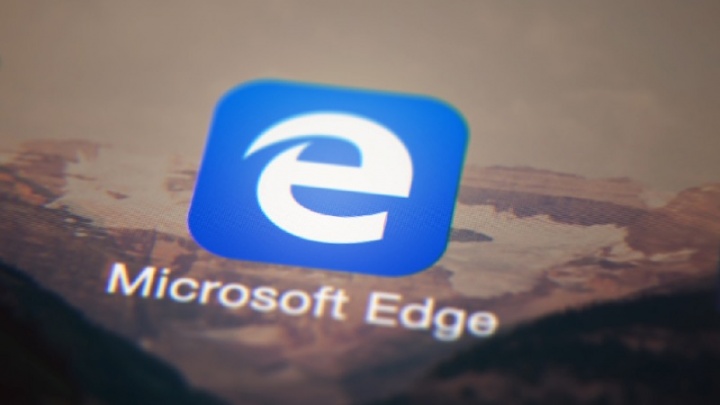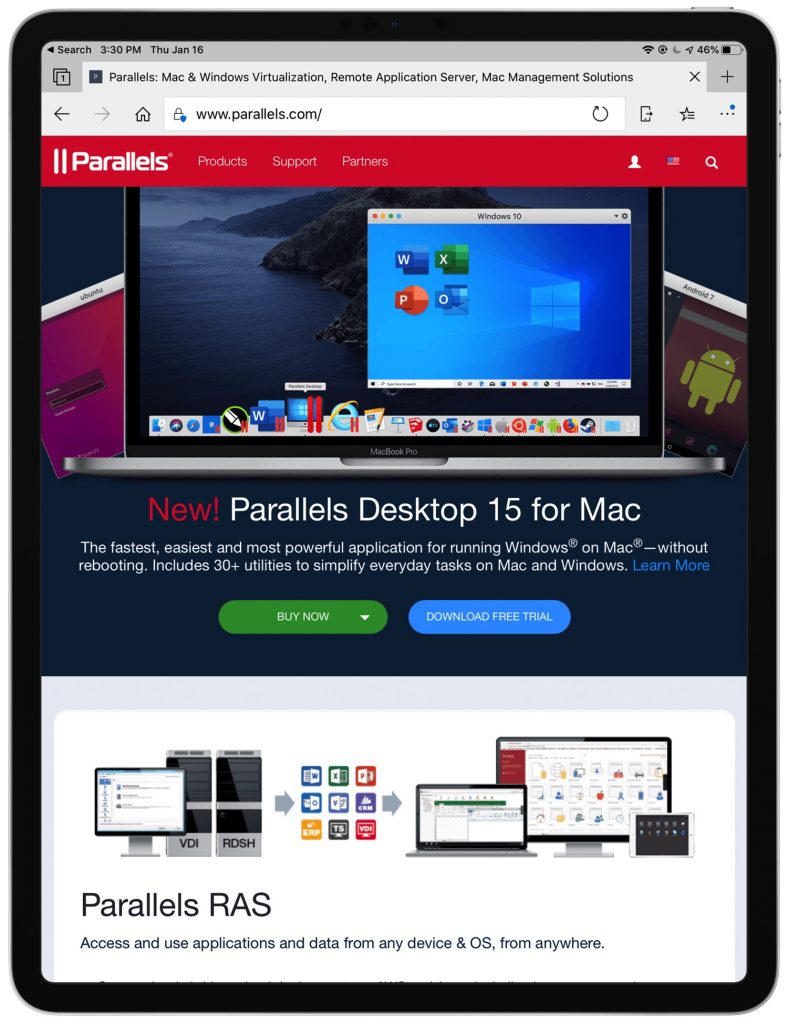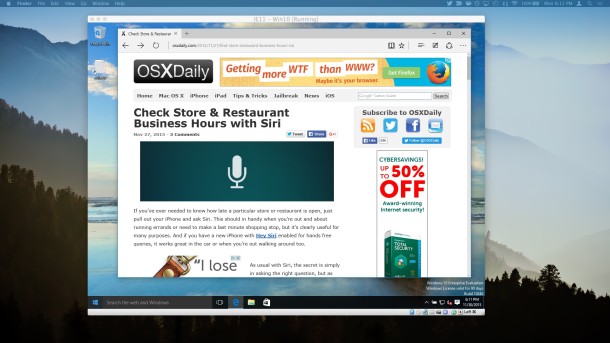-->
Chromium-based release of Microsoft Edge for macOS platform. This is a Microsoft's take in Open-Source browser wars. Best Browser: Microsoft Edge Vs Google Chrome. Even though Microsoft Edge and Google Chrome have the same foundation there are many areas in which they are different from each other. When it comes to User Interface the only way a user interacts with the browser is a very essential part of the web browser.
Microsoft Edge has adopted the Chromium open source project to create better web compatibility and less fragmentation of different underlying web platforms. This change should make it easier for you to build and test your websites in Microsoft Edge and ensure that each works as expected even while viewed in a different Chromium-based browser (such as Google Chrome, Vivaldi, Opera, or Brave).
As the web has grown in usage across an ever-widening array of device types, the complexity and overhead involved in testing websites has exploded. Since web developers (particularly those at small companies) must test against so many different systems, you may find it nearly impossible to ensure that sites work well on all device types and all browsers. Now that Microsoft Edge is based on Chromium, the Microsoft Edge team has simplified the matrix by aligning the Microsoft Edge web platform with other Chromium-based browsers and provided a best-in-class developer tooling experience, both inside the browser and with the other developer tools you use every day (such as Visual Studio Code).
If you are checking out Microsoft Edge and you mainly develop in a Chromium-based browser, you should feel right at home. The Microsoft Edge (Chromium) Developer Tools function in the same way as the developer tools you already know and use. For more information, navigate to What's new in the Microsoft Edge (Chromium) DevTools.
If you are checking out the new Microsoft Edge and you previously developed in Microsoft Edge (EdgeHTML), you now have some great new tools that should make it easier and faster to build and test your websites in Microsoft Edge.
Open the DevTools
If you have never used the DevTools before, the Microsoft Edge Developer Tools are a set of tools built directly into the Microsoft Edge browser. With the DevTools, you are able to do the following.
- Inspect and make changes to your HTML website
- Edit CSS and instantly see preview how your website renders
- See all the
console.log()statements from your front-end JavaScript code - Debug your script by setting breakpoints and stepping through it line by line
All directly within the browser. These are just examples of some of the features the DevTools provide to make it easier and faster for you to build and test your websites in Microsoft Edge.
To open the DevTools
- Select
F12 - Select
Ctrl+Shift+Ion Windows/Linux (Command+Option+Ion macOS)
If you want to see the HTML or CSS for an element on your site, right-click the element and select Inspect to jump into the Elements panel. You may also press Ctrl+Shift+C on Windows/Linux (Command+Option+C on macOS) to open the DevTools in Inspect Element Mode which lets you select an element on the site and see the HTML and CSS in the Elements panel.
If you want to see logs from your front-end JavaScript code or quickly run some script, select Ctrl+Shift+J on Windows/Linux or Command+Option+J on macOS to launch the Console panel in the DevTools.
Core tools
The Microsoft Edge (Chromium) DevTools include the following panels.
- An Elements panel to edit HTML and CSS, inspect accessibility properties, view event listeners, and set DOM mutation breakpoints
- A Console to view and filter log messages, inspect JavaScript objects and DOM nodes, and run JavaScript in the context of the selected window or frame
- A Sources panel to open and live edit your code, set breakpoints, step through code, and see the state of your website one line of JavaScript at a time
- A Network panel to monitor and inspect requests and responses from the network and browser cache
- A Performance panel to profile the time and system resources required by your site
- A Memory panel to measure your use of memory resources and compare heap snapshots at different states of code runtime
- An Application panel to inspect, modify, and debug web app manifests, service workers, and service worker caches. You may also inspect and manage storage, databases, and caches from the Application panel.
- A Security panel to debug security issues and ensure that you have properly implemented HTTPS on your website. HTTPS provides critical security and data integrity for both your site and your users that provide personal information on your site.
- An Audits panel (now renamed Lighthouse) to run an audit of your website. The results of the audit help you improve the quality of your site in the following ways.
- Catch common errors related to making your website accessible, secure, performant, and so on.
- Fix each error.
- Build a PWA.

Note
The Audits panel provides links to content hosted on third-party websites. Microsoft is not responsible for and has no control over the content of these sites and any data they might collect.
Please send your feedback and feature requests.

Extensions
You may have used extensions to the DevTools to help you diagnose and debug issues when building your websites or apps. You may acquire extensions for Microsoft Edge from the Microsoft Edge Addons page. From the Microsoft Edge Addons page, you may browse DevTools extensions from the Developer tools category or search for a specific extension.
You may also add extensions from the Chrome Web Store.
At the top, choose Allow extensions from other stores and then choose Allow in the dialog that appears.
Note
Extensions installed from sources other than the Microsoft Store are unverified, and may affect browser performance.
Choose Add to Chrome to add your DevTools extension to Microsoft Edge.
Shortcuts
These shortcuts control the main DevTools window, work across all tools, or both.
| Action | Windows/Linux | macOS |
|---|---|---|
| Show/Hide DevTools (opens to last viewed panel) | F12 or Ctrl+Shift+I | Command+Option+I |
| Show the Console panel | Ctrl+Shift+J | Command+Option+J |
| Show the DevTools in Inspect Element Mode which lets you choose an element on the site and see the HTML and CSS in the Elements panel | Ctrl+Shift+C | Command+Option+C |
| Show Settings | ? or Fn+F1 | ? or Fn+F1 |
| Show the next panel | Ctrl+] | Command+] |
| Show the previous panel | Ctrl+[ | Command+[ |
| Dock the DevTools in the last position used. If the DevTools remain in the default position for the entire session, the shortcut undocks the DevTools into a separate window | Ctrl+Shift+D | Command+Shift+D |
| Toggle Device Mode | Ctrl+Shift+M | Command+Shift+M |
| Toggle Inspect Element Mode which lets you select an element on the site and see the HTML and CSS in the Elements panel | Ctrl+Shift+C | Command+Shift+C |
| Show the Command Menu | Ctrl+Shift+P | Command+Shift+P |
| Show/Hide the Drawer | Esc | Esc |
| Refresh. Fefreshes the page using the cache. | F5 or Ctrl+R | Command+R |
| Hard Refresh. Forces Microsoft Edge to download resources again and reload. It is possible that the used resources may come from a cached version | Ctrl+F5 or Ctrl+Shift+R | Command+Shift+R |
| Search for text within the current panel. Not supported in the Audits, Application, and Security panels | Ctrl+F | Command+F |
| Show the Search panel in the Drawer, which lets you search for text across all loaded resources | Ctrl+Shift+F | Command+Option+F |
| Open a file in the Sources panel | Ctrl+O or Ctrl+P | Command+O or Command+P |
| Zoom in | Ctrl+Shift++ | Command+Shift++ |
| Zoom out | Ctrl+- | Command+- |
| Restore default zoom level | Ctrl+0 | Command+0 |
| Run snippet | Ctrl+O or Ctrl+P, type ! followed by the name of the script, then press Enter | Press Command+O or Command+P, type ! followed by the name of the script, then press Enter |
| Show non-editable HTML source code in a new tab | Ctrl+U | N/A |
Note
If you are debugging and paused at a breakpoint, the Refresh shortcut resumes the runtime first.
Download Microsoft Edge Browser For Mac
See also
Getting in touch with the Microsoft Edge DevTools team
Use the following options to discuss the new features and changes in the post, or anything else related to DevTools.
- Send your feedback using the Send Feedback icon or select
Alt+Shift+I(Windows, Linux) orOption+Shift+I(macOS) in DevTools. - Tweet at @EdgeDevTools.
- Submit a suggestion to The Web We Want.
- To file bugs about this article, use the following Feedback section.
If you want to preview the latest features coming to the DevTools, download Microsoft Edge Canary, which builds nightly.
Anyone interested in trying Microsoft's redesigned Edge Chromium browser can now download and use the first release version.
Edge Chromium is rebuilt with Google's Chromium, the open-source browser engine that powers main rival Google Chrome. The change will, in theory, make it easier for developers to produce extensions for the browser, as well as making for a more standardized web experience for users and web developers, with websites loading with a similar appearance to Google's own browser.
Under the new version of Edge, Microsoft will include a new tracking prevention default where it is turned on from the start. The SmartScreen and Tracking Prevention mechanisms aim to protect against phishing schemes, malware, and other malicious software, while an InPrivate mode will stop web searches from being attributable to the user, somewhat similar to Chrome's Incognito mode.
At launch, history sync and extension sync won't be available, which could be a deal breaker for some users. These features are a large reason why many users choose Google's Chrome in the first place. Microsoft has stated that both history and extension sync will be available later in 2020.
A Collections feature, which is listed as 'coming soon,' can be used to collect web content for research purposes, which can then be exported into Word or Excel for further analysis.
While many established users are likely to continue using their browser of choice, Microsoft Edge Chromium does serve a purpose. Enterprise users will be able to utilize Chromium's built in 'Internet Explorer' mode, which will allow businesses and agencies to load legacy Internet Explorer content.

Note
The Audits panel provides links to content hosted on third-party websites. Microsoft is not responsible for and has no control over the content of these sites and any data they might collect.
Please send your feedback and feature requests.
Extensions
You may have used extensions to the DevTools to help you diagnose and debug issues when building your websites or apps. You may acquire extensions for Microsoft Edge from the Microsoft Edge Addons page. From the Microsoft Edge Addons page, you may browse DevTools extensions from the Developer tools category or search for a specific extension.
You may also add extensions from the Chrome Web Store.
At the top, choose Allow extensions from other stores and then choose Allow in the dialog that appears.
Note
Extensions installed from sources other than the Microsoft Store are unverified, and may affect browser performance.
Choose Add to Chrome to add your DevTools extension to Microsoft Edge.
Shortcuts
These shortcuts control the main DevTools window, work across all tools, or both.
| Action | Windows/Linux | macOS |
|---|---|---|
| Show/Hide DevTools (opens to last viewed panel) | F12 or Ctrl+Shift+I | Command+Option+I |
| Show the Console panel | Ctrl+Shift+J | Command+Option+J |
| Show the DevTools in Inspect Element Mode which lets you choose an element on the site and see the HTML and CSS in the Elements panel | Ctrl+Shift+C | Command+Option+C |
| Show Settings | ? or Fn+F1 | ? or Fn+F1 |
| Show the next panel | Ctrl+] | Command+] |
| Show the previous panel | Ctrl+[ | Command+[ |
| Dock the DevTools in the last position used. If the DevTools remain in the default position for the entire session, the shortcut undocks the DevTools into a separate window | Ctrl+Shift+D | Command+Shift+D |
| Toggle Device Mode | Ctrl+Shift+M | Command+Shift+M |
| Toggle Inspect Element Mode which lets you select an element on the site and see the HTML and CSS in the Elements panel | Ctrl+Shift+C | Command+Shift+C |
| Show the Command Menu | Ctrl+Shift+P | Command+Shift+P |
| Show/Hide the Drawer | Esc | Esc |
| Refresh. Fefreshes the page using the cache. | F5 or Ctrl+R | Command+R |
| Hard Refresh. Forces Microsoft Edge to download resources again and reload. It is possible that the used resources may come from a cached version | Ctrl+F5 or Ctrl+Shift+R | Command+Shift+R |
| Search for text within the current panel. Not supported in the Audits, Application, and Security panels | Ctrl+F | Command+F |
| Show the Search panel in the Drawer, which lets you search for text across all loaded resources | Ctrl+Shift+F | Command+Option+F |
| Open a file in the Sources panel | Ctrl+O or Ctrl+P | Command+O or Command+P |
| Zoom in | Ctrl+Shift++ | Command+Shift++ |
| Zoom out | Ctrl+- | Command+- |
| Restore default zoom level | Ctrl+0 | Command+0 |
| Run snippet | Ctrl+O or Ctrl+P, type ! followed by the name of the script, then press Enter | Press Command+O or Command+P, type ! followed by the name of the script, then press Enter |
| Show non-editable HTML source code in a new tab | Ctrl+U | N/A |
Note
If you are debugging and paused at a breakpoint, the Refresh shortcut resumes the runtime first.
Download Microsoft Edge Browser For Mac
See also
Getting in touch with the Microsoft Edge DevTools team
Use the following options to discuss the new features and changes in the post, or anything else related to DevTools.
- Send your feedback using the Send Feedback icon or select
Alt+Shift+I(Windows, Linux) orOption+Shift+I(macOS) in DevTools. - Tweet at @EdgeDevTools.
- Submit a suggestion to The Web We Want.
- To file bugs about this article, use the following Feedback section.
If you want to preview the latest features coming to the DevTools, download Microsoft Edge Canary, which builds nightly.
Anyone interested in trying Microsoft's redesigned Edge Chromium browser can now download and use the first release version.
Edge Chromium is rebuilt with Google's Chromium, the open-source browser engine that powers main rival Google Chrome. The change will, in theory, make it easier for developers to produce extensions for the browser, as well as making for a more standardized web experience for users and web developers, with websites loading with a similar appearance to Google's own browser.
Under the new version of Edge, Microsoft will include a new tracking prevention default where it is turned on from the start. The SmartScreen and Tracking Prevention mechanisms aim to protect against phishing schemes, malware, and other malicious software, while an InPrivate mode will stop web searches from being attributable to the user, somewhat similar to Chrome's Incognito mode.
At launch, history sync and extension sync won't be available, which could be a deal breaker for some users. These features are a large reason why many users choose Google's Chrome in the first place. Microsoft has stated that both history and extension sync will be available later in 2020.
A Collections feature, which is listed as 'coming soon,' can be used to collect web content for research purposes, which can then be exported into Word or Excel for further analysis.
While many established users are likely to continue using their browser of choice, Microsoft Edge Chromium does serve a purpose. Enterprise users will be able to utilize Chromium's built in 'Internet Explorer' mode, which will allow businesses and agencies to load legacy Internet Explorer content.
While it targets enterprise users, the newly released browser is available for anyone download now from Microsoft directly, on both macOS and Windows. Chromium's enhanced privacy features and support for 4K Ultra HD Netflix with Dolby Atmos and Dolby Vision, currently for Windows 10 only, has not been replicated on Google Chrome yet.
Edge Browser Mac Reddit
AppleInsider has affiliate partnerships and may earn commission on products purchased through affiliate links. These partnerships do not influence our editorial content. Praat download for windows.
